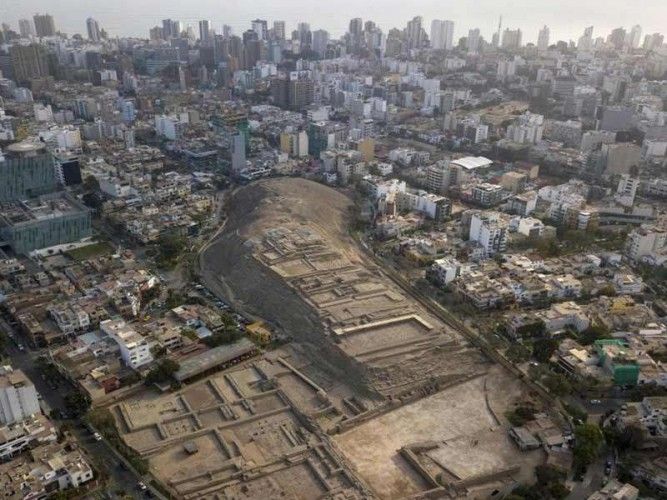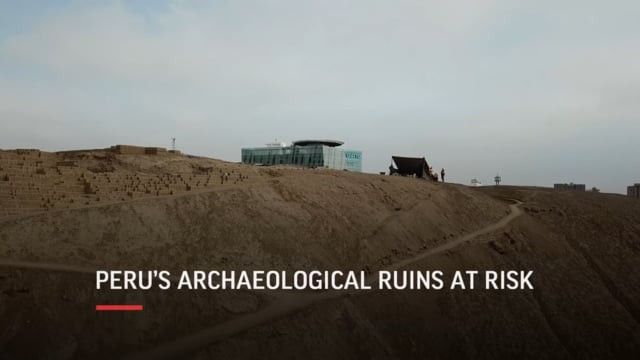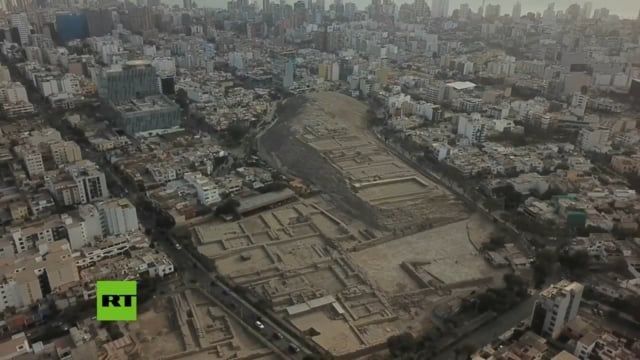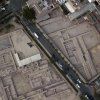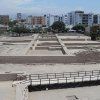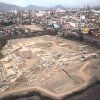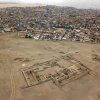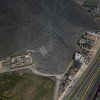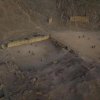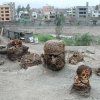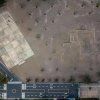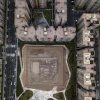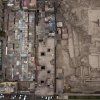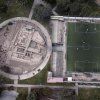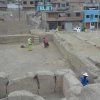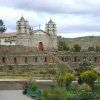Thousands of years before the Spanish conquerors arrived in South America, what we know today as Peru was inhabited by numerous highly advanced cultures that over time built impressive structures, settlements, road networks, irrigation channels and much more amazing us to this day with their complex skills in construction, agriculture and arts, their culture and social structures.
When the Spaniards defeated the Incas, the last indigenous civilization that ruled over the land, and took over the country a new chapter in Peru’s history begun. And as lots of conquerors around the globe before and many after them did, they suppressed the local population, partly enslaved them, tried to eradicate their beliefs and traditions, and forced a new religion on them.
To demonstrate the beginning of the new era to the locals, especially sacred places and important administrative and religious centers in the country were vandalized, plundered, and idols, other religious and ceremonial objects destroyed wiping out the adoration and power that for hundreds of years radiated from them.
After that some of the sites were just abandoned and left to deteriorate as for example Pachacamac, the most important and influential ancient ceremonial and administrative center in the coastal region. Others were (partly) destroyed and either on the site or on top of them new buildings erected.
The Presidential Palace (Palacio de Gobierno), former "Palace of the Viceroys of Peru" and before that “Pizarro’s Palace”, for example was built on the site of the residence of Taulichusco, the Inca leader of the region; Lima’s famous cathedral erected on the grounds of a religious temple next to it; or the Church of San Juan de Bautista built on top of the Sun Temple in Vilcashuaman which was one of the most important religious and administrative centers the Incas built outside of Cusco.
And while the Spaniards didn’t manage to eradicate all ancient traditions and beliefs, they succeeded in alienating the locals from their visible heritage long after their reign.
Even in independent Peru the sites, sacred cemeteries and pyramidal structures called huacas that once were sacred places their ancestors built, lived in and for, adored and protected, never regained the importance and spiritual value they once had.
At best they were just ignored, left to deteriorate and forgotten, at worst tomb raiders took everything of value and locals removed and demolished the ancient structures to reuse the adobe building blocks and other materials.
Only in the 19th and early 20th century explorers and archaeologists re-discovered many of the forgotten or believed to be long lost ancient cities, religious and administrative centers and numerous huacas. For decades however, their discoveries were more or less ignored, and the historical importance of the findings went unappreciated.
In Lima for example many ancient structures and colonial buildings still standing had to make for way for urban renewal and growth in the 20th century. At the beginning of the century the Peruvian capital only had about 130,000 inhabitants; in 1920 already about 176,000, in 1940 540,000. The population roughly doubled by the 60s and again by the 70s; at the turn of the millennium Lima was home to over 6 million people.
Industrialization and the opportunity to work at one of the many new factories in the 1920s and after World War II, (extreme) poverty and natural disasters in the middle of the century, and ultimately the terror of the 1980s resulted in massive migration waves from rural areas in Peru to the capital. Hundreds of thousands of poor Peruvians came to Lima trying to escape their living conditions and hoping for a better future.
But Lima wasn’t prepared for them, so with no other choice they squatted land and / or settled wherever they could even if it was next to, inside or on top of an archaeological site. First most migrants took up residence at the outskirts of what today is the historic city center quickly turning the haciendas, farms, agricultural land and green spaces surrounding the city into residential and working areas and soon uniting today’s city center with the towns of Miraflores, Barranco, Magdalena and Callao to one city. Later the hills to the east of Lima and the desert around it were populated.
After the modernization of Lima in the early 20th century, for decades the city just tried to stay on top of the massive, uncontrolled growth. But at what cost: without proper urban planning and without respect and awareness for the countless ancient structures and their importance what was left of most of them was leveled to the ground and residences or high-riser built there.
Suddenly streets cut through ancient complexes, a football stadium sat on top an age-old huaca, a university occupied part of an ancient city, shanty towns (nearly) swallowed archaeological sites, people in their luxury condos didn’t have an ocean, but a huaca view, and waste water and garbage threatened still existing sites.
No-one, not the people nor the government, at that point could or would care and was able or willing to understand that Lima’s rich archaeological and historical past was sacrificed and had to give way to the urban expansion of the Peruvian capital.
Just recently AP -Associated Press released a short drone video and some stunning photos (see below) impressively visualizing how Lima overgrew the visual reminders of its rich historic past leaving just a few of them enough space to pop out here and there so the Peruvian heritage won’t be forgotten completely.
But with the new millennium the attitude towards these ancient sites started to change and the awareness for Peru’s cultural patrimony grew, at least partly.
Today an estimated 400 to 500 known ancient ruins are spread throughout the metropolitan area of Lima making the Peruvian capital the South American city with the largest number of pre-Colombian archaeological sites; depending on the source throughout Peru there are about 45,000 to 50,000.
Still many sites are forgotten, hidden, neglected, left to deteriorate, used as dump, squatted, damaged or torn down out of ignorance, indifference or for greed for profit. Still many people in Peru can’t or are unwilling to see the value and importance of these ancient relics.
But thanks to the efforts of Peruvian authorities and cultural institutions, local and foreign archaeologists, universities and private sponsors, which might at least partly not only be fueled by curiosity and the will to preserve history, but also by the desire to attract more tourism and profit from unexploited opportunities, small and big projects were initiated to explore, preserve and restore up to now neglected sites and open them to the public and tourists. A good beginning.
Nevertheless, municipalities still approve construction projects near, extremely close, inside and even through archaeological sites and the Peruvian government just allocates enough money to preserve about 1% of the country’s ancient ruins properly. But money is not all that’s missing. While Peruvians are proud of their heritage, often awareness and respect for it is lacking.
So, opening museums and archaeological sites for free once a month is a good beginning to reconnect Peruvians with the visual reminders of their past and convince them to see ancient ruins and huacas as more than valueless mounds of earth that need their protection. But still lots more has to be done to save the unbelievably huge number of sites left by our ancestors.

